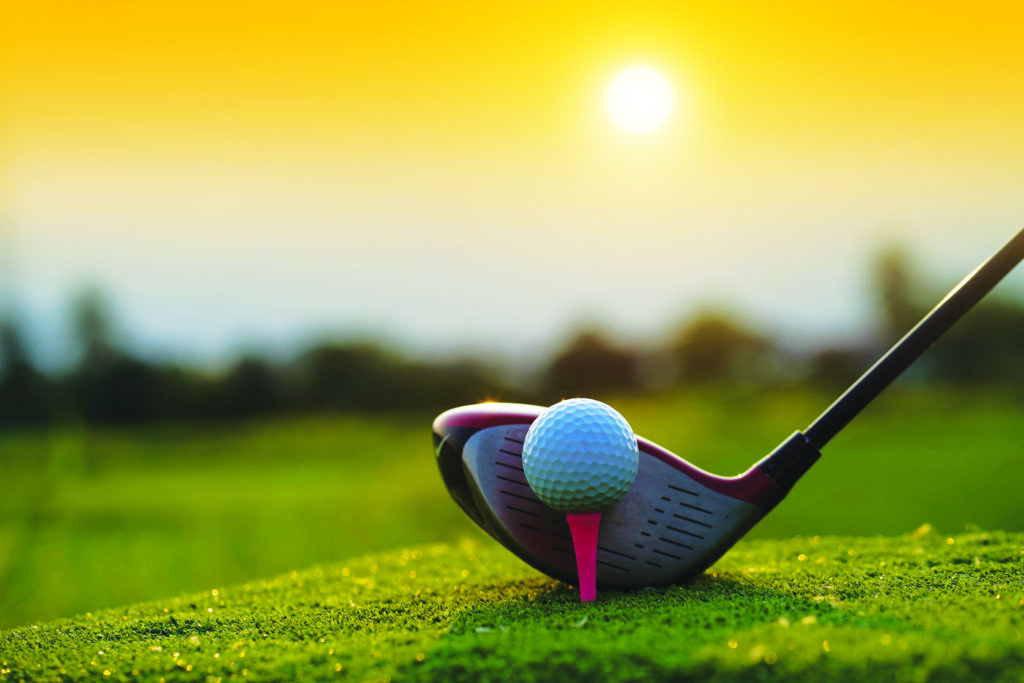
Golf balls on the golf course with golf clubs ready for golf in the first short. In the morning, with the beautiful sunlight.
In part one of “How to Improve Your Club Face”, we focused on the setup; grip, aim, ball position, and posture. It is now time to get the club moving while being mindful of the club face positions. In the takeaway/backswing, the rolling of the club face to extreme opening is flaw number one. Many have heard, to get the toe up when parallel to the ground in the takeaway. This can help many players but can harm many others. If you struggle with slicing and or pulling the ball, my recommendation is to keep the club face facing the ball and mimic your spine angle when it’s parallel to the ground.
Flaw number two is the club face position at the top. If the lead wrist gets too cupped, the face will be too open and difficult to square in a very short time frame. Get in front of a mirror and work on flattening the lead wrist to mimic the lead forearm. If the toe of the club is pointing at the ground, the club face is too open for most golfers. Try to find a happy medium for the club to not be at the sky, nor at the ground. Matching the face to the lead arm at the top would be a good goal for most golfers.
The all-important transition to impact can have many variables. Let’s try to simplify how “the magic move” can improve your club face. I will use Harvey Penick’s analogy: The simple bump, shift/pressure to the lead foot as the trail arm, elbow, falls is one move, not two. This puts the club face on a better entry to deliver the golf club. It is imperative to maintain your wrist angles, conditions during this movement. As the trunk continues to rotate, the lead wrist will also bend or flatten more, and the trail hand/palm will move toward the ground to avoid flipping the club face. If the face is too open here, you will have no choice but to try to square it. To illustrate this, I will use a ping-pong paddle or tennis racket to demonstrate how the club face moves to a squarer impact position. You could even try using an impact bag.
Remember, sometimes real vs feel can be very different. Seeing is believing, and trusting your corrections is validation. Use a mirror in your practice to engrain new sensations. Your practice must have purpose! The club face has the largest influence on quality golf shot control.
Good luck in your journey and keep it fun!
Buck Mayers is an Emeritus Professional at Escondido Golf & Lake Club in Horseshoe Bay, TX and can be reached at www.buckmayersgolf.com